One house mouse can be capable of creating up to 36,000 droppings per year. No wonder rodent infestation and waste are common household pest concerns. Fortunately, mice and rat droppings can be easily cleaned up in just a few steps.
How to safely clean up and dispose of mice and rat droppings? Mice and rat droppings can be safely cleaned up by utilizing a household disinfectant mixture, gloves, paper towels, and a sealable trash bag. It’s critical to ensure proper ventilation during clean-up to avoid inhaling potentially harmful airborne matter. Never sweep or vacuum rodent droppings.
This article will provide a more in-depth discussion of each of these steps, as well as some tips to prevent future rodent infestations.
What Do Rat Droppings Look Like?
Rat droppings are capsule shape with rounded ends. They look similar to the shape of a medicine pill or a sausage. Rat droppings are generally shiny black or brown. These are about the size of a raisin and are to be found in small clusters.
What Do Mouse Droppings Look Like?
Mouse droppings are thin and rod-shaped, with tapered or pointed ends. They are usually brown, small, and smooth in appearance. It tends to be found in larger clusters, as mice produce a larger number of droppings per day than rats.
Main Differences Between Rat and Mice Droppings

Rat and mouse droppings look similar, but a few differences in size and shape exist to help you determine the culprit. Some of the key differences are that rat droppings are more of a capsule shape while mouse droppings are more rod-shaped. Rat droppings are also much larger than those of mice.
Size of Rat Poop Versus Mouse Poop
The size of rat poop is much larger than the size of mouse poop. Rat droppings are about ¾ of an inch (2 cm.) in length, while mice droppings are much smaller at about ¼ of an inch (0.6 cm.) in length. Mouse poop is generally thinner than rat droppings as well.
Are Mouse and Rat Droppings Dangerous?
Because they can carry several harmful bacteria and viruses, mouse and rat droppings are dangerous and must be disposed of using proper precautionary measures.
Do Mice and Rats Spread Diseases?
Rodents are known to carry diseases such as rabies, rat-bite fever, Hantavirus, and food poisoning. Many of these can spread to humans via inhalation or ingestion and can cause severe symptoms or fatality.
Hantavirus, in particular, is a group of viruses that can spread to humans in an airborne fashion. Due to this, it’s imperative to have proper ventilation before beginning the clean-up of any mice or rat droppings.
How To Safely Clean Up and Dispose of Mice and Rat Droppings?
Mice and rat droppings can be disposed of in a few simple steps. As discussed above, rodent droppings can carry disease, so you must follow both the simple clean-up and safety steps discussed below to prevent inhaling any contaminated matter.
Here’s how to safely clean up and dispose of mice and rat droppings:
- Ventilate the space.
- Wear gloves.
- Apply a disinfectant and water solution.
- Let the solution soak for ten minutes.
- Clean up with paper towels.
- Place it into a plastic bag and dispose of it in the trash.
- Sanitize the entire area.
- Wash hands with soap and water.
- Never vacuum or sweep rodent droppings or nests.
- Minimize food and shelter for rodent prevention.
- Trap or bait any remaining rodents.
Related: Mice Control: How To Get Rid of Mice?
Ventilate the Space

Before cleaning up, open any windows and doors within the space. Leave the area for thirty minutes to allow adequate time for the air to begin to circulate. Don’t close the ventilation until you finish the clean-up and the scent from any cleaning products dissipates entirely.
Wear Gloves
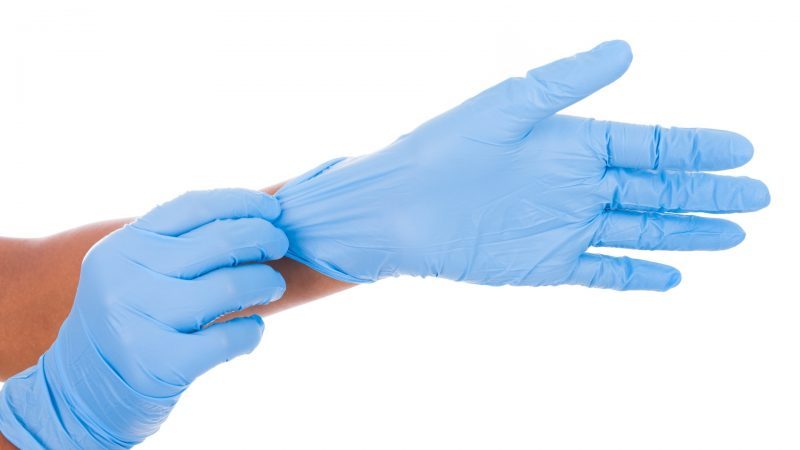
For similar reasons as the ventilation requirement, ensure you’re wearing rubber, latex, or vinyl cleaning gloves before beginning any additional cleaning steps.
Gloves protect you from contact with disease-contaminated droppings. It should not be removed until you finished the clean-up. While wearing gloves, avoid touching your face or mouth as this can also spread disease by ingestion or contact.
Apply a Disinfectant and Water Solution
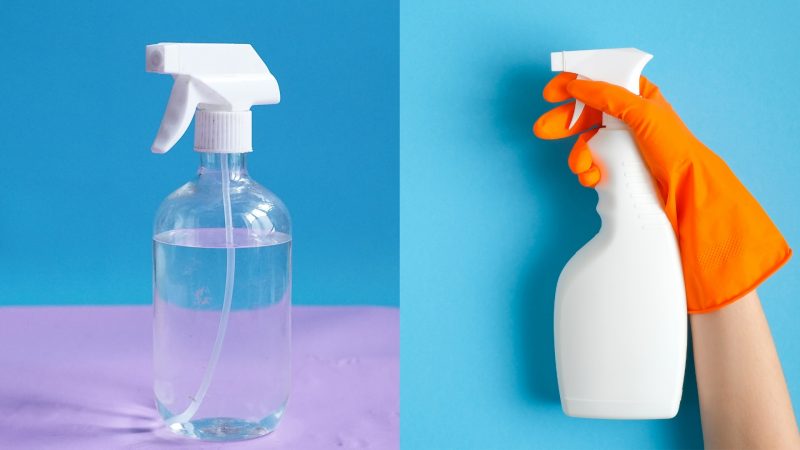
Start by mixing a cleaning solution of bleach and water. The recommended concentration for this solution is 1 part bleach with ten parts water, per the CDC. Take caution and blend this solution in an area that’s also well-ventilated to avoid inhaling harmful fumes.
It isn’t necessary to purchase a specific cleanser for rodent waste; household bleach or similar disinfectants will be sufficient. Once you pinpoint the droppings or urine, apply the disinfecting solution of bleach and water directly to the waste. This can be accomplished by spraying it or carefully pouring it over the area.
Leave the Solution To Soak for Ten Minutes
Leave this solution to soak in for 10 minutes. This allows for more thorough disinfection of the area before removal. Additionally, this time allows the solution to soak in completely and reduces the risk of dry particles becoming airborne and getting inhaled.
Clean Up With Paper Towels
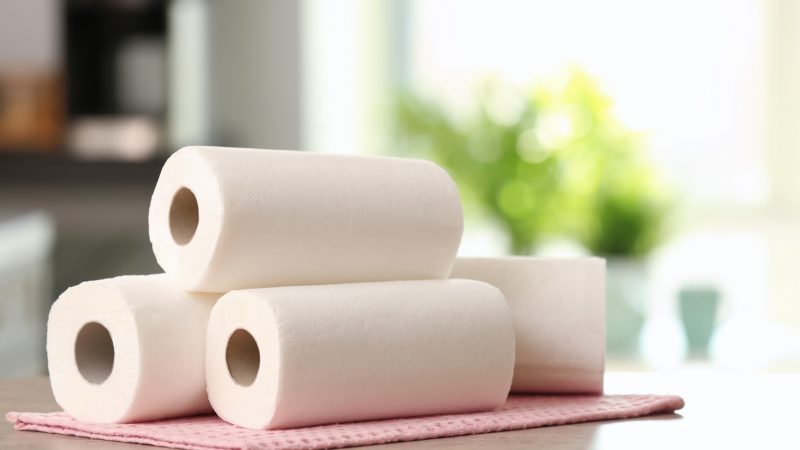
Next, you’ll want to collect droppings using paper towels carefully. Place the towels over the solution-soaked matter and use your hand to scoop large droppings or nest material into the paper towel.
Follow up with additional towels to soak up remaining liquid waste. Utilize as many towels as necessary until all visible waste matter has been collected.
Place Into Plastic Bag and Dispose of in Trash
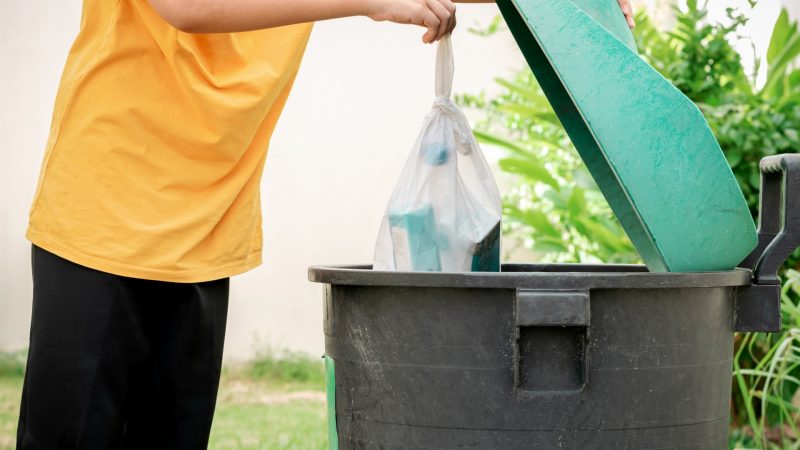
Once you’ve collected all of the droppings and liquid waste using paper towels, the next step is to dispose of it in the trash properly. Place all of the paper towels and waste into a sealable plastic bag. Use care to avoid dropping and wasting back onto the space you’ve just cleaned.
When all material has been placed into the plastic bag, completely seal the bag to ensure waste particles or liquid cannot escape back into the environment or air while sitting in the trash. Finally, place this sealed bag into a garbage can with a tight-fitting lid.
Sanitize the Entire Area
Now that you’ve cleaned up and removed all visible waste material and debris, it’s crucial to sanitize the entire area thoroughly. This includes places where you’ve collected droppings, urine, nest material, dead carcasses, and any surrounding areas that rodents have come into contact with.
You can utilize a similar bleach solution or disinfectants for hard surfaces such as floors, countertops, and cabinets. Apply it thoroughly to the whole surface area and then dry it using a towel. Carpets and rugs should be steam cleaned and shampooed to remove any additional residue on the flooring.
For other soft items that may have been exposed to rodents, such as clothing and bedding, wash them with hot water and laundry detergent.
Wash Hands With Soap and Water
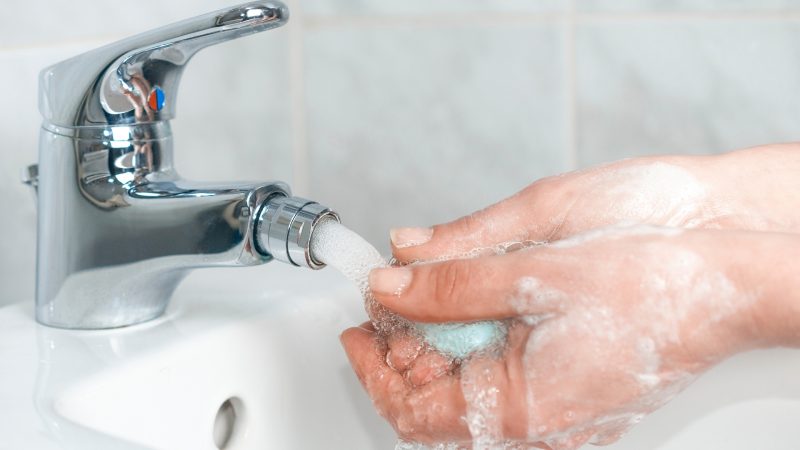
Once you’ve completely cleaned and sanitized the area and removed your gloves, you must wash your hands thoroughly with soap and water.
Scrub your hands for at least the amount of time it takes to sing the ‘Happy Birthday’ song. Ensure soap is applied to the front, back, and sides of your hands and under your fingernails.
This step provides additional protection against the risk of accidentally ingesting any hidden rodent residue from droppings, urine, nests, or carcasses.
Never Vacuum or Sweep Rodent Droppings or Nests
Another important thing to note: You should never vacuum or sweep rodent droppings or nest material. As previously mentioned, there is a multitude of diseases, viruses such as Hantavirus, and illnesses carried by mice and rats that can spread in an airborne fashion. Both vacuuming and sweeping can circulate contaminated particles into the air and increase the risk of accidental inhalation.
Minimize Food and Shelter for Rodent Prevention
Now that you’ve successfully removed existing traces of your rodent infestation, you should enact preventative actions to reduce the likelihood of further incidences.
- It’s essential to minimize the food sources available to rats or mice on your property. Both mice and rats are omnivores, and as such, they eat both plant and animal matter. Rats will eat almost anything but prefer food sources such as meat, pet food, cheeses, and fish. On the other hand, mice can also eat meat, but they seem to prefer vegetables, grains, seeds, and nuts.
- Store food in rodent-proof containers. Metal, thick plastic, or glass containers can all be suitable. Some available options like Wildone Airtight Food Storage Containers from Amazon also have the convenience of a reusable chalkboard label for added organizational ease. Store pet food in larger similar airtight containers like Gamma2 Vittles Vault 20lb Airtight Bucket Container.
- Great For Pantry Organization: With the stackable and...
- Perfect Combination of 4 Sizes: Our 14pcs kitchen storage...
- Airtight Seal Lids Keep Food Fresh: Each pantry storage container...
- Food Grade and BPA Free Plastic: These clear plastic dry food...
- Versatile Food Containers: These airtight storage containers are...
- Keeps Food Fresh and Flavorful: our patented GAMMA SEAL...
- Say Goodbye to Pesky Pests: In addition to locking in freshness...
- Food-safe and BPA-Free: Engineered with strength and durability...
- Must-Have Pet Owner's Cat and Dog Feeding & Watering Supplies:...
- Proudly Made in the USA: Unlike many other pet food storage...
- Secure the garbage and food scraps to avoid allowing unwanted rodent access. Utilize secure airtight trash cans like iTouchless Stainless Steel Step Trash Cans. Stop feeding any outdoor birds or animals to avoid drawing mice or rats towards your home or building as well.
- The original wood based wire snap trap with large scented plastic...
- Clean and quick trapping
- Can be used around food, water, children, and pets
- Ideal for runaway trapping
- Swiss cheese pedal requires no baiting
- After all potential food sources have been secured, you should limit access to shelter as well. This includes sealing any holes or gaps that may exist in your home or other building utilizing material such as cement, steel wool, metal flashing, or ¼ inch (.6cm) hardware cloth. Make sure all windows are secure. Ensure external entries are completely closed at all times.
- Remove any other material outside that may be suitable for rodent bedding, such as piles of trash, old cars, furniture, leaf piles or mulch, or building materials. Cut access to water as well by fixing leaky faucets and covering or dumping areas where water gathers.
Trap or Bait Any Remaining Rodents
After you’ve cleaned and secured the problem area, you may have concerns about any rodent stragglers that may remain unseen in the space. If so, you can choose to trap or bait to remove them. Care should be taken with bait, as rodents may die in spaces that are difficult or impossible to reach, which will result in odor and sanitary concerns.
Simple snap traps like Victor Easy Set Mouse Traps, also from Amazon, are generally easier for disposal purposes. However, rats may be more cautious than mice and may prove more challenging to capture.
- The original wood based wire snap trap with large scented plastic...
- Clean and quick trapping
- Can be used around food, water, children, and pets
- Ideal for runaway trapping
- Swiss cheese pedal requires no baiting
Should You Call Exterminators?
You may want to call an exterminator if you suspect a large rodent infestation. A significant amount of droppings may be an indication of a big rodent population. If you’ve attempted to trap or bait the rodents yourself but are not having success eliminating them, it may be time to call a professional.
An exterminator can also help identify how rodent populations are entering the area and can help remove them from hard-to-access areas.
Related: Rat Control: How To Get Rid of Rats?
List of Sources
Cleaning Up After Rodents. (2019). Centers for Disease Control and Prevention.
Rats and Mice. Fairfax County, Division of Environmental Health.
Identify and Prevent Rodent Infestations. United States, Environmental Protection Agency.
- How to Get Rid of Copperheads | Practical Guide - August 27, 2023
- How to Get Rid of Corn Snakes | What Makes Them Aggressive? - August 27, 2023
- How to Get Rid of Alligators | Safety Measures and Removal Methods - July 16, 2023



